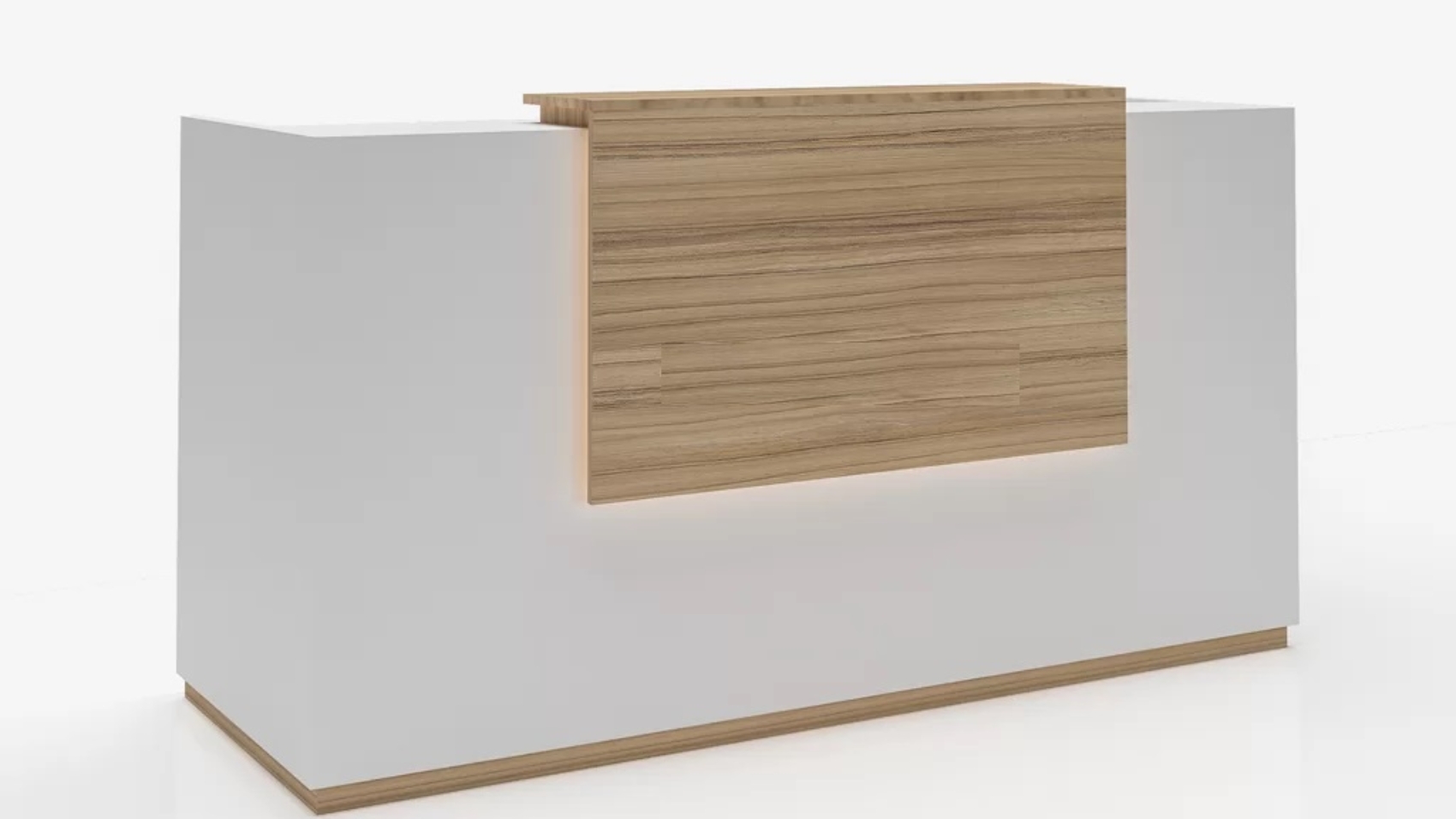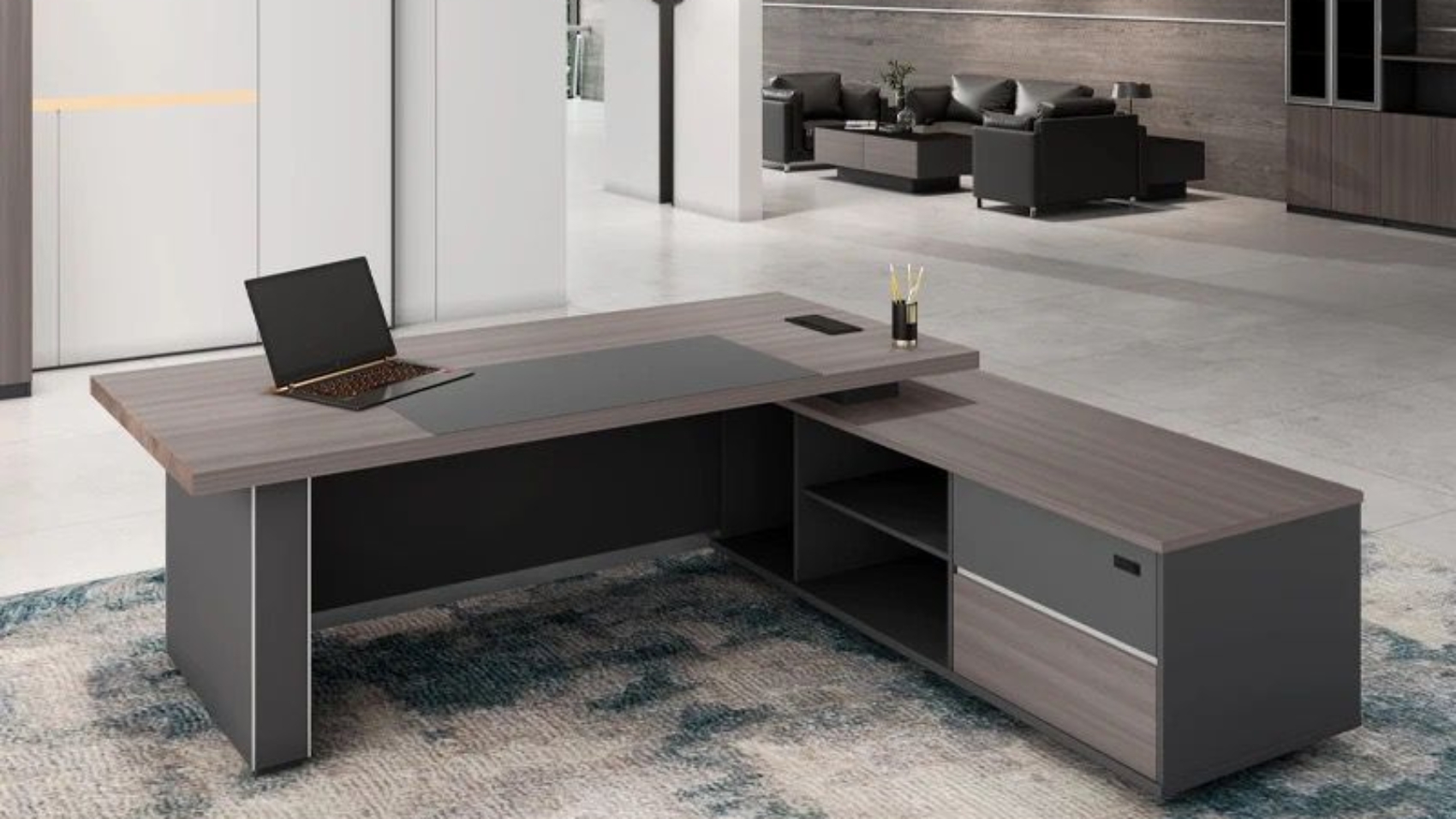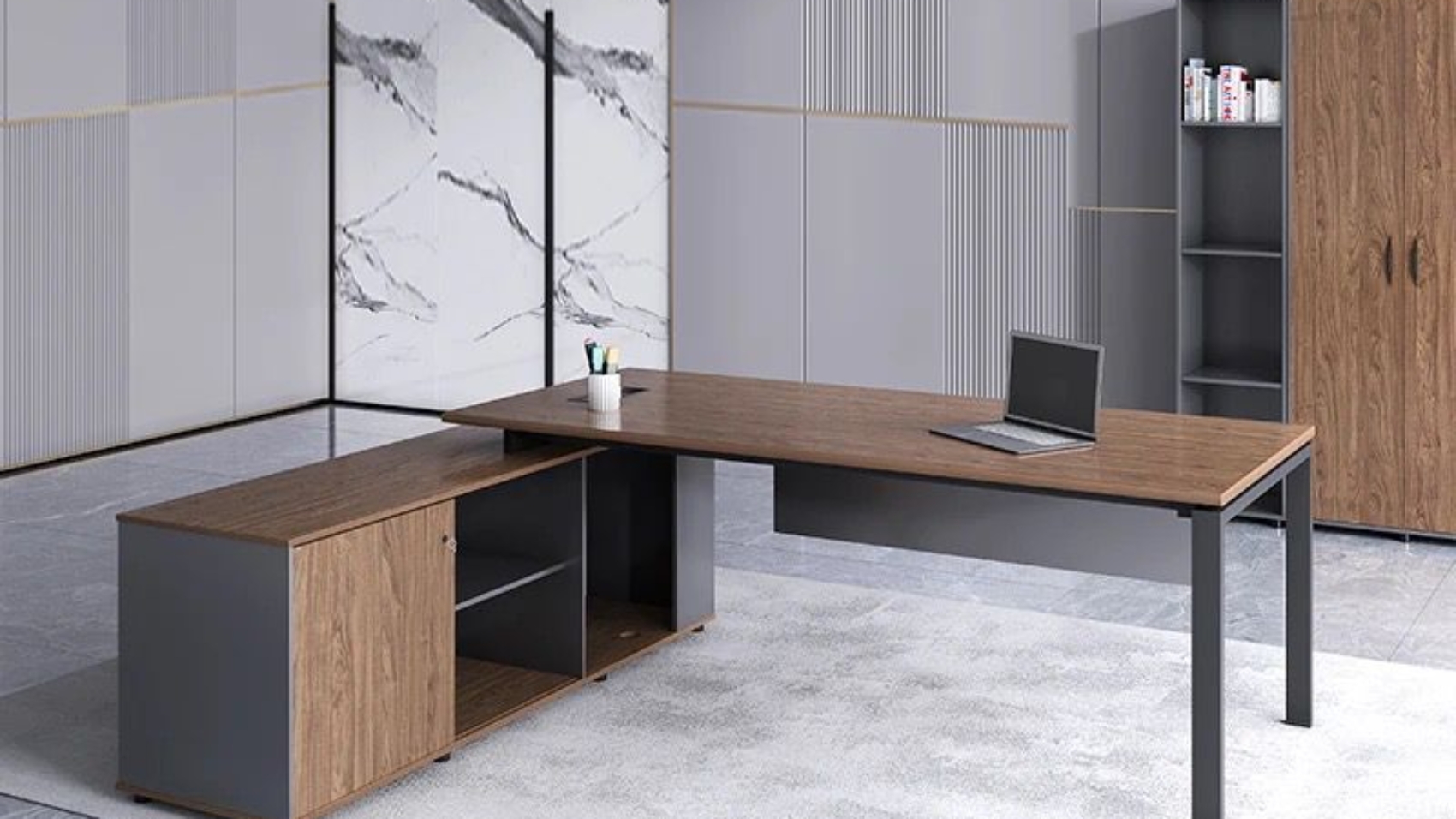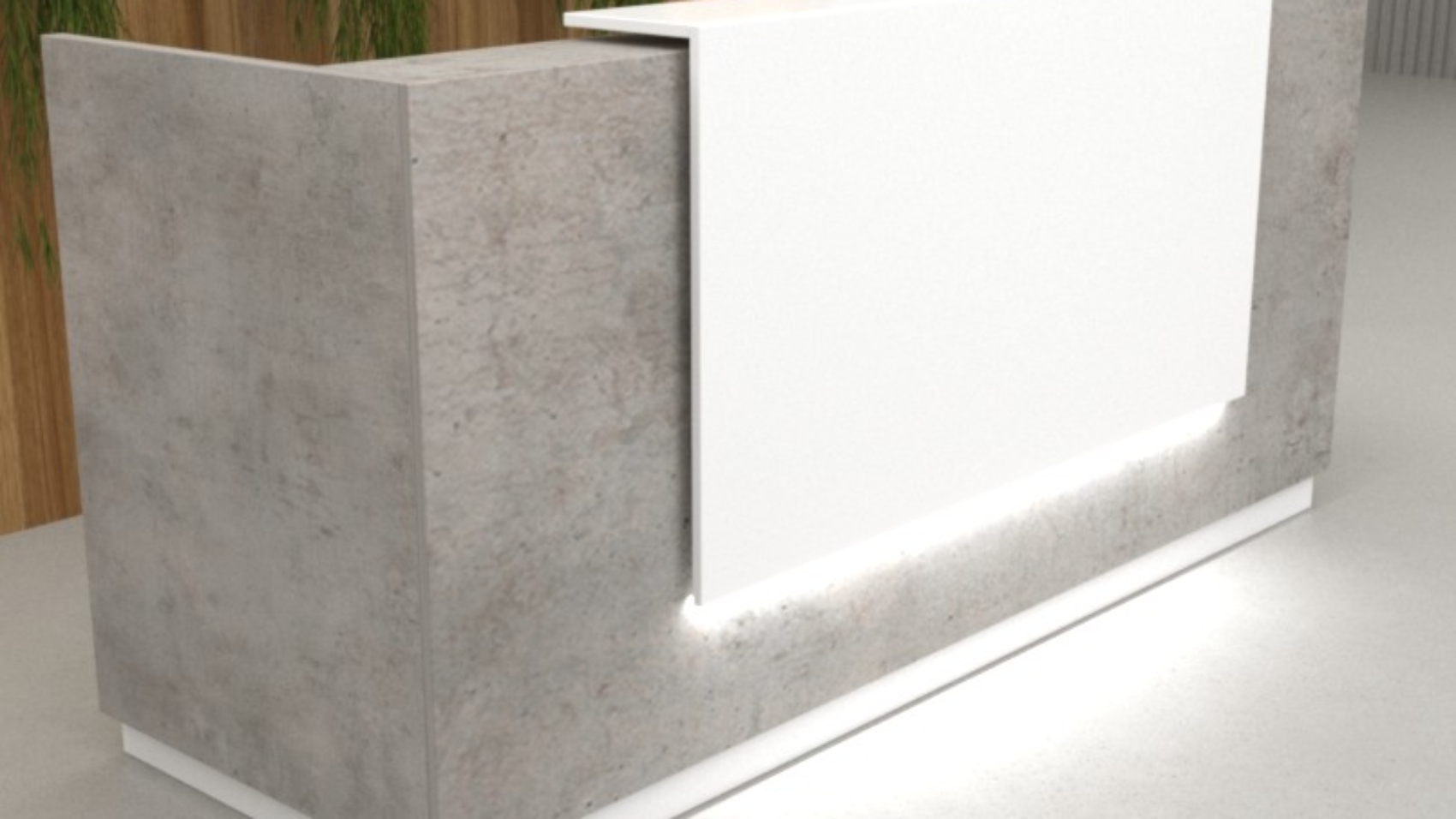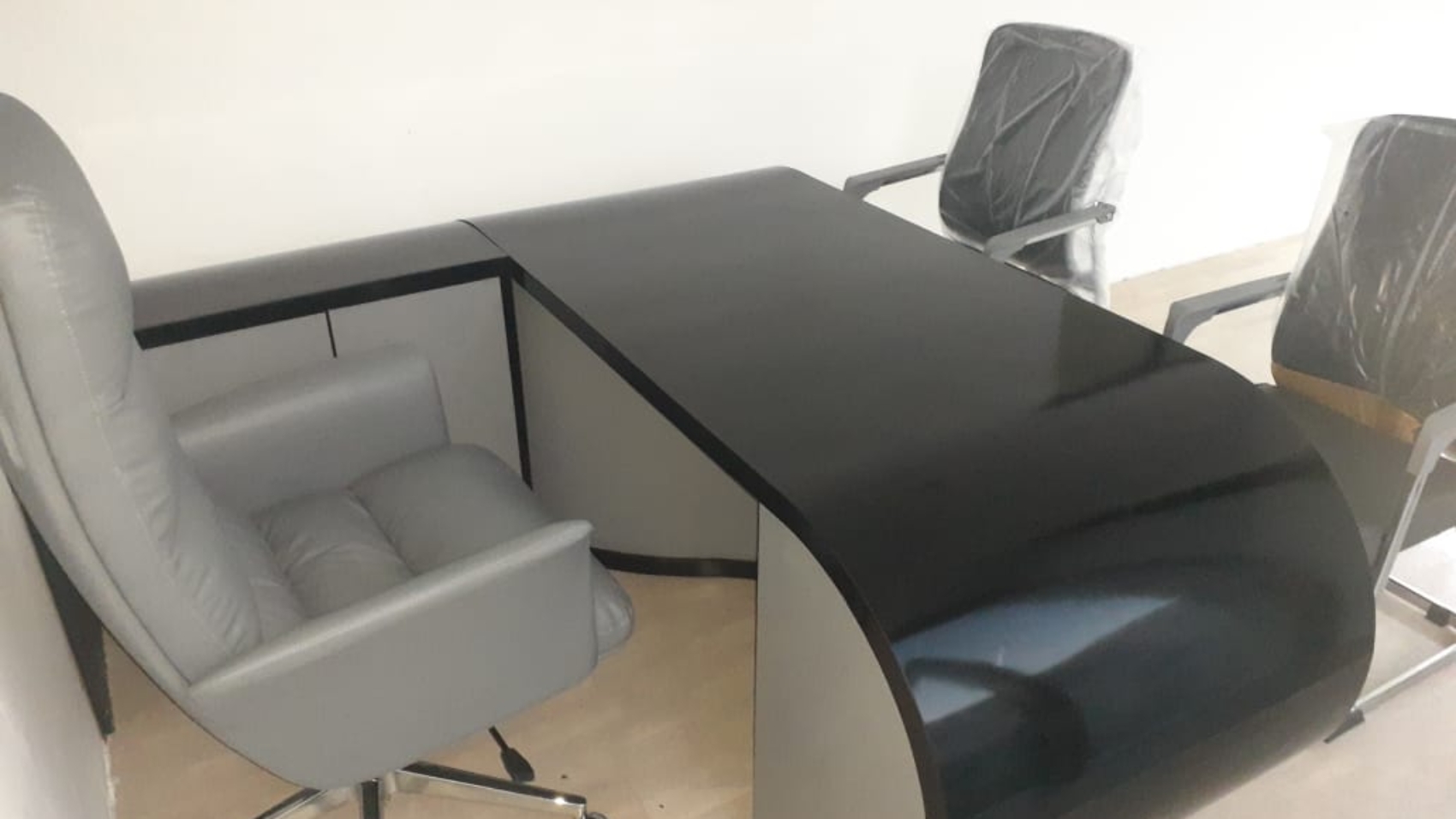Modern Office Desk Furniture includes all types of furniture. Items in a workplace for the aim of each usage and aesthetic. It may include laptop desks, portable computer tables, filing cabinets, executive chairs, conference tables, and cabinets. Nowadays, varied designs and styles of furniture are available everywhere. It’s tough to decide which one is right for any particular workplace.
But, no one ought to worry! Salam UAE has your back! We are ready to provide you with all the updates about office Desks furniture in Dubai. We understand that it is tough to spare a day out of the busy routines and see pieces of furniture in many markets. That’s why! Salam UAE, you can browse a range of furniture styles. That is offered for sale by completely different dealers.
The Significance and Seriousness of Office Desks furniture Dubai
Office Desks furniture Dubai could be a vital part of any workplace or work environment. It plays an enormous role in boosting workers’ productivity. Thus, it’s important to have the proper things. So, all workers feel comfortable and can perform their tasks. The colors and styles have to be the same to have an effect on the final mood of the workplace. The various materials and the comfort they supply will verify. Whether the paperwork will achieve success or not.
Choose the best office Desks furniture in Dubai (style/design)
With the correct setup, you can turn any house into a functioning workplace on time.
- Use wall storage like racks and display or shoe shelves to take up less space than filing cupboards
- Create a lot of space for working by employing a pullout table—place it away after you have done
- Make the most of awkward corner areas with an L-shaped table.
As we all know, we spend most of our days in the workplace. Thus, you need to invest in quality furniture and equipment.
- Buy chairs that are comfortable and support your back. Good seating is necessary once it involves productivity
- Position your desk in a light area. Research has shown exposure to sunlight. While working makes you more active and improves sleep quality
According to research, furniture can improve performance by 10 – 15%. Almost 90% of the staff displayed dissatisfaction with the workplace environment. As proper furniture was not in place. Furthermore, according to a report, comfortable workstations can increase job satisfaction by 24%. Because through comfort furniture, an office space looks more adorable and pleasing. It removes lethargy and inspires employees.
So, choose master office Desks furniture Dubai. That can boost your employees’ performance and strengthen the skilled setting in your workplace.
The Effect of Office Desks furniture Dubai on Business Success
Business Success and Modern Office Desks furniture Dubai
Omit business fulfillment and the modern-day workplace. You need to be one element – effective or productive. Of course, that sounds quite simple when you put it that way. But turning into and staying effective is true quite a complex process.
The productivity method does many different things. There are many subsections that fall under the umbrella. Productivity includes a device’s ability to work; how speedy it works. How power efficient it’s; expenses and what sort of impact. They have profits clients. How many you have got their character cost. What number of purchases they make; and also includes employees and their morale.
You may wonder why the happiness of your staff is a huge deal
You may wonder why the happiness of your staff is a huge deal. In reality, as long as the work is being carried out. It doesn’t count whether they’re smiling at their bespoke office table and loving their process, or not. Well, definitely, that’s a dinosaur mindset. If you are a commercial enterprise. That does not place the utmost importance on employee morale. Then you are definitely no longer going to reap the productivity. It’s that easy.
Let’s break it down into its most simplistic form. People do the work, whether they make the machines do it or whether they do it themselves. They may be those controlling the manner. If a worker is satisfied and stimulated. Their work can be more durable. They will provide you with ideas around the conference table on a consistent basis. They will care about the job they’re doing. When you care about something, you carry it out higher; as a result, it suggests that one thing to you.
But, if your employees are not happy, they are going to do the very bare least and not anything more. They may come to work, get through the day, watch the clock, and go back; that’s it. They will not go higher than that on the far side. They will not care about coming up with ideas due to the fact. That they will not see the factor in it if you do not pay attention, and as a result, extra errors are likely.
Productivity equals profits.
The opposite key is that productivity equals profits. You do not have to be a brain doctor to figure it out. If you are more efficient, you are doing more with what you have, which means more money coming your way.
Enterprise means “money at the end of the day”.
So, we have realized that morale is crucial, but, how will you boom that? There are limitless things you can awareness of. Most Primary businesses forget about the office Desks furniture Dubai in your area in your workspaces. This consists of your predominant office, your canteens, your break areas, your reception areas, and your conference rooms. and the other rooms you have got inside your building, which can be under your control.
Every single such room wishes to be optimized in phrases of comfort, support, and performance. The design of the room also desires to be desirable to the attention. We, humans, are visual creatures and we work better whilst we are pleased with an area, e.g. we like the look of it.
If you are considering an office revamp soon. You will discover a variety of beneficial data here at Salam UAE.
Change the Look of Your Office with Good Quality Office Desks furniture Dubai
Office Desks furniture Dubai plays an important role in forming a positive impression of a company. From here, the importance of buying good quality furniture increases. There are a few major furniture items that are required in an office. These are bookshelves, chairs, filing cabinets, and desks. The important thing that should be kept in mind is the arrangement of all these items in an apt manner. All the furniture items need to be arranged in such a way that they make your office look attractive.
There are many important points that should be kept in mind. Before purchasing office Desks furniture in Dubai. These are the layout of the office space you have; the size of the office. The number of employees working in that office space. It is very crucial to buy all the furniture items keeping in mind the above points. Some of the preeminent furniture items are discussed below.
Office Chairs
Chairs are a chief furniture component used in an office. It is very crucial to arrange all the chairs in an apt manner so that the guests can sit. One should always get a good-quality office chair. Because a proper chair helps in spending long hours of work in an office. Moreover, a high level of comfort is offered by a good-quality chair.
Office chairs today exist in a wide variety of designs, colors, and shapes. The entire market is flooded with many chairs, thus allowing a person to go for the one as per his needs. The best part is that a good quality chair also helps in getting rid of problems like back pain, and body aches. Which are caused by the improper selection of chairs. It is better to use chairs with armrests and back support.
Office Desks
Desks: Office desks are also one of the major furniture components of an office. One can find these desks in endless sizes, shapes, and colors. One should always go for the best models as these are composed of the strongest materials. Desks are today available in various shapes, such as “L”-shape, semi-circle, rectangular, and V-shape.
The most preferred ones are those with curved edges and triangular-shaped office desks. You can also change these desks as per your needs. Advancement in technology has resulted in the formation of different kinds of desks. One can also avail desks provided with in-built drawers. Which are useful for storing your important documents.
Office Tables
Tables: A table is also one of the important office Desks furniture Dubai components. Good quality tables should be used in an office. So, that the employees feel comfortable while working. All the tables used in an office should have a proper height so that the employees do not face any kind of problem. These tables today are available in innumerable colors and designs.
The Internet is the best option for employees looking to buy good quality office Desks furniture in Dubai. There are many websites that can help you find the items you are looking for. You can enjoy lucrative deals without any trouble. Moreover, it is more effective and less time-consuming.
Get the latest updates on modern Office Desks furniture in Dubai. For details on office Desks furniture Dubai, please visit our showroom at Warehouse no 8 Al Jerf industrial area 1. Medina Restaurant same building. Ajman. UAE
Executive Office Desks furniture Dubai Is the Key to a Successful Business.
When you own a business, you feel on top of the world, and you will want to have the most luxurious office. This is definitely not a bad thing. Every business person will have the same thought when it comes to their office. This is not only required so that you can feel proud and satisfied each day. But this majestic look is also required.
So, that your visitors and clients will get an excellent first impression of the professionalism of your business. An executive look will not only give you comfort and respect. But it will also give you good business and boost profits. Executive Office Desks furniture Dubai
Using executive furniture will add more value to your office. You may be ready to find an enormous kind of executive furniture. This furniture is intended in such a way. That is not only provides comfort but also provides a grand look to your office space. Today, most interior decorators. Also, prefer reliable executive office Desks furniture Dubai to decorate the executive’s room.
With the requirements and work styles undergoing an enormous transformation and with everyone expecting luxury. This furniture has made a large change compared to the normal executive furniture.
There is a variety of executive office Desks furniture Dubai pieces. Beginning with simple furniture to anything large you may need. In fact, there are a few dealers.
Who will design new executive office Desks furniture Dubai for their clients?
With large budgets based on their requirements? Once you have made up your mind to furnish your office with executive office Desks furniture in Dubai. You will have to do some preliminary work, like thinking about the purpose of the room.
What kind of furniture will be required? This will give you a fair idea of what kind of furniture you will need. It also makes sense to measure the size of the room. So, you can buy furniture that will fit exactly into it and give a chic look to your room. You can also consider other interior decorating options. Like paint color and wall hangings before buying the furniture.
With all these things set in your mind
With all these things set in your mind. You can either browse the internet for elegant executive office Desks furniture Dubai or visit your nearest outlet. Make sure that your furnishing items not only have an executive. They elegant look but are also lightweight. It is good to opt for furniture made of glass. any other weightless materials since then transportation will be easier.
Furniture should be selected in such a way. That they reflect the style, personality, and professionalism of the executive and his business. The décor and furnishing of an executive office should make everyone feel. Think of new ways to achieve success. Good furniture has the ability to make you feel good. It can provide you with warmth leading you to think better and earn more.
You will need some time and expert advice in giving your room this feel and it is definitely a sensible thing to do. If you want to be a successful business owner. Then you need to surround yourself with furniture. That makes you feel confident and inspired to work hard, create new ideas, and thus boost profits. Executive Office Desks furniture Dubai is the answer! Executive furniture creates a sense of pride.
That increases ambition while at the same time imparting a majestic first impression to visitors and clients. You will find a large collection of executive office Desks furniture in Dubai at Salam UAE. Here you will find contemporary, modern, and traditional executive office Desks furniture. Dubai collections in enough styles and designs to meet your taste.
Styles of Modern Office Desks furniture Dubai
Almost all folks have come upon offices with poor interior designs. Where office Desks furniture Dubai for workspace isn’t placed. Though this might sound normal to us, the clients of those businesses can develop a negative impression of these companies. Which can have an instantaneous effect on the corporate. A big reason behind the clumsy decoration of offices is the actual fact.
That office owners sometimes order large amounts of furniture for their own offices and fail to rearrange them. Whether you’re using a piece of modern furniture. Which is very popular, it’s better to embellish the office settings in a different manner. By adding some interest to the office furnishings. You’ll make your workspace sound and add plenty of creativity to the layout.
The aesthetics of the workplace can reflect the fundamental goals of an organization. Furniture is a crucial part of office aesthetics. So, it’s vital that every and every piece of furniture is well placed. In this way, the office can reflect a correct image, which may entice clients who walk into your office. A well-furnished workspace reflects an environment of professionalism.
Which might work in your favor. A modern piece of furniture is an embodiment of professionalism, functionality, and appeal. But so, on creating it in the simplest possible way. It’s important to understand the various styles which might make it look even better.
Modern Office Furniture
Today, most employees like working with modern, lightweight furniture, called “modern furniture.” This furniture can give a classical look and a good degree of professionalism.
But you do not want your office to appear like the stereotypical office. So, try different styles and make them the cornerstone of your office. For your employees, attempt to create a friendly and welcoming ambiance. That might offer them a refreshing feeling.
This refreshing feeling would enhance the efficiency of the staff. Would be of great help to your business. If you wish for a mixture of wood, glass, and metal in your modern furniture. You’ll be able to try it since that may make the office space look very different and unique. Every office should be ready to reflect the individuality and personality of the office owner. So, make your office look different and unique from the rest with a mixture of fashion. That is your own signature style.
Office Desk furniture Dubai
The modern office Desk furniture Dubai style that you should select for your office needs to diverge, be dynamic, and fashionable. In this way, you’ll make sure of the very fact that the design. Would make your office look appealing. Also, the functionality would keep your employees productive. The mix of both these factors can make things add your favor in the very best way. Also, keep the factor of cost in mind since that might be an awfully important point of consideration. Once you get a group that suits all your criteria, don’t waste time thinking; opt for it.
When you are looking to form a press release about the planning of your office. Make certain to return to SalamUAE.ae to review the available styles and contours of recent furniture. You’ll find fashionable furniture. Which will ease you tell your clientele. You are professional, successful, and a pacesetter in your field.
Best Office Desks furniture in Dubai
Salam UAE Best Office Desks furniture Dubai Company, Dubai, UAE.
The trade hub of the world in this technology era is the UAE. From industry to services, every aspect of the business is covered here. With time, many brands, and companies. Businesses are setting up here to achieve their future goals. For the business establishment, you need a brilliant idea, the right direction. A stunning workplace with office Desks furniture in Dubai.
SalamUAE offers you the best Office Desks furniture in Dubai. It is very important to have the right product in the right place. So, you need not worry about it. Moreover, the office should be organized. There are a lot of factors that make the workplace elegant. But office Desks furniture Dubai is one of the most important. The question is, why? The answer is very simple because it creates a positive. Productive impact on the office environment and on office employees.
Quality Office Furniture in Dubai
It is a need to have peaceful surroundings. This feature increases their working capacities along with creativity. SalamUAE is the place to choose quality Office Desks furniture in Dubai. We are an office environment and seating-oriented company.
Our Office Desks furniture in Dubai makes a huge impact on your clients, visitors, and business partners. And this behavior uplifts your business or company. Office Desks furniture Dubai is like an investment in your business. Our furniture is like a cash deposit. You can discover your dream office Desks furniture Dubai in our display center. The best part is the low prices with higher quality. SalamUAE products definitely suit your budget.
“Salam UAE is the Best Office Desks furniture Dubai Company in Dubai”
We offer:
Free Space/Workspace Planning
- Office Layout
- Consultations
Customization
- Choose Your Quality
- Choose a design.
- Sizes are always an option for the customer.
Professional installation installed by our professionals.
- Express Help
- Immediate Delivery
A Guide to Buying the Best Office Desks furniture in Dubai
Every company wants to buy quality office Desks furniture in Dubai at a lower cost. It’s a challenge to find suitable office Desks furniture Dubai suppliers and manufacturers. So, what will be the criteria for that? the company should be verified. , experienced professionals are required, and most, shouldn’t compromise on quality. Your entire question is answered by SalamUAE. We are qualified, experienced, and provide elite quality Office Desks furniture in Dubai. We will make your office elegant and graceful.
How Can I Choose the Best Office Desks furniture in Dubai?
It is a challenging task to choose office Desks furniture in Dubai. It required a lot of concentration, interrogations, and consideration. You have to investigate all the potential. Whether it is quality, price, dimension, quantity, or other factors also involved. So, a professional should with all these preparations required. All the information discussed above is required. When selecting the best office Desks furniture in Dubai.
Shop for furniture from Salam UAE.
Salam UAE is the best option for buying Office Desks furniture in Dubai. SalamUAE is a leading company in the United Arab Emirates. SalamUAE knows your requirements and needs. With 8+ years of professional experience and hundreds of satisfied clients,
We offer office desks, office chairs, educational chairs, office workstations, meeting and conference tables, coffee tables, side tables, counter stools, office storage cabinets, office supplies, office accessories, booths and pods, panels and dividers, sofa seating, office flooring, whiteboards, height-adjustable tables, wooden storage, steel storage, and others.
Kindly visit our showroom in, for a wide variety of the best quality Office Desks furniture in Dubai.
We are looking forward to meeting you and assisting you in choosing the best office Desks furniture in Dubai.
- In cities and regions, we provide office Desks furniture in Dubai.
- Dubai, Abu Dhabi, Sharjah, Al Ain, Ajman, Ras Al Khaimah.
- Buy Online Home Office Desks furniture Dubai
- Choose the right home office Desks furniture Dubai:
Nowadays, there are a lot of people who have an office at home. Of course, like company office Desks furniture Dubai, home office Desks furniture Dubai is important and effective too. If you choose the right furniture for your home office, you can help your business improve.
In this article, you will get information about some types of home office Desks furniture in Dubai.
Your home office chair:
You spend most of your work time sitting in your office chair. So, if you choose a comfortable one that has adjustable objects. That can be the right office Desks furniture Dubai for you.
Of course, having comfortable lumbar support is one of the advantages of a good office chair.
Some types of office chairs:
Mesh chair:
A chair that has a mesh back and keeps you cool even on hot days.
Ergonomic chair:
An office chair with adjustable objects and mesh back. This chair can be a good option for your home office Desks furniture Dubai.
Leather chair:
A luxury and stylish office chair. This kind of office chair is often used in films and luxury places, of course with a classic design.
Your home office desk:
This office Desks furniture Dubai will help you get easy access to your items. Also, you will have desktop security with an appropriate home office desk. Besides, you can add some storage to some of these desks.
First, you should consider your room size when choosing your office desk.
Height adjustable desk
With this desk, you can increase your work speed. Sometimes it happens that you are tired of sitting for a long time. So, you leave your work for a few minutes. But with a height-adjustable desk, you can do your work standing or sitting.
Executive desk
This kind of office desk lets you add some storage to it. You will have desktop security on it. It can be a good choice for the manager’s room.
We hope this article will be useful for you and be effective in choosing the appropriate office Desks furniture in Dubai.
Office Desks furniture Dubai We Offer in Dubai
SalamUAE provides quality office Desks furniture in Dubai at a cheap cost. Office Desks furniture Dubai has a very vast variety and collection. Here at SalamUAE, you will find designs, fit-outs, office Desks furniture Dubai, and acoustics. Our primary aim is to provide quality and satisfaction to the end-user. We sell furniture. We know the needs and requirements of corporate business. Our products fulfill all your demands. You can choose your own custom design. Our website, salamUAE.ae, has a huge range of office Desks furniture Dubai designs. select and order from us. Your product will be ready in a short time. The following is the office Desks furniture Dubai offered in Dubai:
Types of Office Furniture That We Offer.
- Desks: Reception Desks, Executive Office Desks, Office Desks, Height Adjustable Desks, Workstations, Accessories.
- Chairs: Ergonomic Chairs, Mesh Chairs, Leather Chairs, Boardroom/Visitor Chairs, Multi-functional Chairs, Lounge Chairs, Counter Stools, Training Chairs.
Meeting Tables: Boardroom Tables, Conference Tables, Multi-functional Tables
- Storage: wooden storage, steel storage.
- Classic Sofas, Modern Sofas, Pouf Ottomans, Coffee Tables.
- Flooring: carpet, parquet.
We have a huge collection of customized furniture with different designs and colors.
We specialize in custom office Desks furniture in Dubai. You can design your office according to the area of the office. There is no need to adjust a fixed-size piece of furniture. measure your office workspace and we will suggest accurate and cheap solutions with high quality. Contact us now and inquire about your query. And enjoy friendly, high-quality office Desks furniture in Dubai.
Best Office Desks furniture Dubai Offered in Dubai | Office Desk in Dubai | Office Chair in Dubai | Low Price Furniture in Dubai
A Guide to Buying the Right Office Desks furniture in Dubai
Choosing the perfect office Desk furniture in Dubai is not easy. It is a challenging job. Every company or business their own need depending upon many factors and priorities. But, there are some standards, if you adopt them while buying office Desks furniture in Dubai. It will be beneficial for your organization.
The Following are the key points everyone should keep in mind. While procuring office Desks furniture in Dubai: –
1. Rule/Priority:
It is very necessary to perceive the required products or demand. The purchasing manager should make a checklist in which furniture according to their priority is discussed in detail. This list helps while procurement. It is the first step towards finding appropriate office Desks furniture in Dubai. The office workspace and interior will glow if the correct quantity is considered.
2. Business Type/Classification:
The business nature is very important and interlinks with office décor and interior. Office Desks furniture Dubai should have characteristics according to your business type. It must be very clear what kind of furniture suits your business.
3. Workspace Management:
Management for arranging office Desks furniture Dubai is the principal of this entire story. The accurate place for office desks, office chairs, and other stuff should be planned. Nowadays prime companies like SalamUAE office Desks furniture Dubai have their professionals to help you out. They make designs for you according to your idea and also create a sitting plan for the office. It is requisite and will relay help you in arranging. You will be able to see your office in 3D (Third Dimension) before buying or investing.
4. Comfortability:
The extensive and sprite of this process is comfortable for employees. It will lead your worker productivity at a level. If you search on the internet for office Desks furniture in Dubai. You will find hundreds of thousands of results. But you have no idea whether this chair or desk is satisfying or not. To overcome this anxiety, you have to do a small research. Until physical inspection, you cannot determine that this furniture is secure and restful. SalamUAE will help you with this task. Come visit our showroom. comfortability is a key feature of perfect office Desks furniture in Dubai.
5. Budget/Cost:
An issued budget by an organization for office Desks furniture Dubai will determine the purchasing options. Based upon the above points, including functionality, specification, quality, and durability. A buyer is able to choose the right office Desks furniture in Dubai. Since they have all the assessments. Although the budget is foremost. You don’t choose cheap office Desks furniture in Dubai. If you had planned to buy quality office Desks furniture in Dubai. It will last a long time, and you will not face any trouble soon.
6. Designs/Brands:
In this era, everything is ready-made or premade. A customer or client only has to place an order. , brands are the names of trust and delivery of the same quality products in a time sequence. So, people have confidence in trademarks. As a parallel, there is also another manufacturer. Who is trying to make a trademark for their products? As this is the sole choice of the purchaser to choose, although an experienced one knows which are the best. Choosing the best will help towards ensuring the best for your workers and business. Collections of design series are available in the markets. Again, it depends on the nature of your business. For example, in a doctor’s clinic and an advocate’s chambers office. There is a huge difference in interior and requirements.
7. Functionality and Quality:
Office Desks furniture Dubai must contain multifunction along with quality. Best materials of manufacturing enhance the quality and functionality concern with easiness. The height-adjustable desk is the best example of multifunctional office Desks furniture in Dubai. SalamUAE never compromises on the quality of furniture. Our products have been certified by our hundreds of customers. We manufactured with standard grade material and stylish modern designs.
8. Windup:
Office Desks furniture Dubai is very dominant in a workspace. It is not about furniture. It’s about the comfort you are providing to your employees to achieve your goals. So, when buying Office Desks furniture in Dubai, SalamUAE is the best option for you.
SalamUAE is a local furniture manufacturer that has been operating in the UAE with staff. We have more than 20 years of experience. We’ve mastered the art of furniture design. Known for our amazing product range and compelling design work.
Also, See:
Salam UAE No 1 Affordable Office Furniture Dubai

 Cart is empty
Cart is empty 


